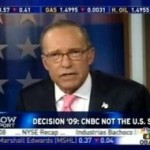Financial fraud is a large, profitable business, but you would never know that reading the financial press.
That’s because banks and investment firms perpetuating these frauds, aka “perps” on “Law and Order,” are so ingrained into the nation’s financial services fabric that criticizing them is verboten in the mainstream financial press, such as the Wall Street Journal, CNN, CNBC, Bloomberg and many other small financial and investment outlets.
But the news about BNY Mellon’s multi-trillion currency fraud manipulation is worthy of a case study for some important reasons.It is the nation’s oldest bank (started by Alexander Hamilton in 1784), the most prominent and, up until now, the most impeccable name in the multi-trillion and esoteric global custody business.
This position means it manages trillions of dollars for mutual fund companies, sovereign wealth funds,

thousands of pension funds and 401(k) plans that routinely and now, naively, rely on BNY Mellon’s failed fiduciary position and financial expertise to manage all of their investments, including foreign currency trading.
The bank also bills itself on its web site as the “the investment company for the world.” Thankfullly, the bank does not say it is “the honest investment company for the world.”BNY Mellon also participates in global financial policy and financial strategy development, new products and policies that could affect the financial markets worldwide.
However, a visit to their corporate web site does not prominently mention the $714 million fraud settlement. Maybe they think that if a tree falls in the forest and there is no one around, it does not make a sound.But now, thanks to this report from Institutional Investor (II), an established and respected mainstream institutional financial publication, comes this story about BNY’s financial fraud, its scope and lack of accountability.While this well-respected publication has been in business for decades, I have to say that as a former reporter for the bi-weekly Pensions & Investments, we used to regularly read II for its longer, graphically-rich articles.
But II now looks exceptionally toothless when it produces this great article and then lamely concludes that investors should “be vigilant,” so they can presumably avoid become fraud victims in the future.We will discuss why the magazine has to say this later in this article, but needless to say, for the millions of pensioners and 401(k) participants who were victims of this extensive fraud, losing $1 in return compounded over a lifetime of work is irreplaceable income that will be very welcome in future decades. Needless to say, BNY Mellon is not offering, nor will they ever, offer to compensate their thousands of victims.
Scope of BNY Mellon’s Fraud
Here are the details of this financial fraud as contained in the II article:
- The bank is charged with earning over $2 billion over a decade while simultaneously engaging in the currency fraud.
- The bank entered a plea agreement in March after it was charged in two separate actions by the U.S. Justice Department and the New York State Office of the Attorney General. This agreement also consolidated input from the SEC and the U.S. Department of Labor.
- Authorities said the bank “fraudulently” executed customer transactions and did not give them the best possible rate for these trades.
- Victims of BNY fraud included the Florida State Retirement System, Fidelity, the Alaska Permanent Fund, the Capital Group, a huge mutual fund company with thousands of individual investors, as well as several sovereign wealth funds, including those from Kuwait and Abu Dhabi. As in most huge case, this one was a global, equal opportunity fraud that ripped people off regardless of race, creed, income, or time zone. With financial institutions like this, we may have to rewrite the poem on the Statue of Liberty to include victims of financial fraud, as well as new immigrants.
- As is typical in this frauds, BNY Mellon never acknowledged guilt, but wrote a check for $714 million to settle the charges, and did fire some employees (my bet is they are lower level traders and supervisors) to blunt the charges and attempt to show that only lower-level employees were engaged in this errant behavior. Things like this protect the top executives. BNY Mellon, which certainly knows the details about the complex pension law ERISA and the fiduciary standard, also said it would increase its disclosure practices. Importantly, the article did not say how or to whom it would make itself more transparent.
- The bank paid a $714 million penalty and it never affected its bottom line. Even despite this small amount, the penalty is “likely” to be tax deductible, according to the article, which only adds insult to injury for the pensioner victims and the American public. This makes it look like financial fraud is not only a profit center, but a great tax loophole, as well.
- On April 22, 2015, BNY Mellon reported that it earned $229 million for the first quarter 2015, an increase of 69%, and its FX trading and other units were extremely profitable. At this rate, the fine would be paid off in about three quarters, which may be why Michael Greenberger, a professor at the University of Maryland School of Law and a former official at the Commodity Trading Futures Commission, told II that the fine was “a slap on the wrist.” Foreign currency trading (known as FX by professionals) is a global, trillion dollar market.
- Since November 2014, authorities in Europe and the U.S. have been trying to cut the level of FX fraud. FX fraud was, and maybe currently is, occurring at the same time major banks in Europe and the U.S. manipulated the London Interbank Offering Rate (LIBOR) and the Pacific Interbank Offering Rate) PIBOR interest rates that affect millions of borrowers worldwide, in everything from car loans and mortgages to long-term borrowing.
These global frauds are occurring at the same time that Republicans are continuing their mantra of less regulation of financial institutions, such as BNY Mellon, and markets. Famously, Larry Kudlow, the

conservative ideologue on CNBC, said there were no victims when it came to LIBOR fraud. This is an amazing statement for a TV economist to make, but ideology always trumps the truth these days.
Part of a Larger Problem at BNY Mellon?
If the courts consider corporations as people, than we can also make the analogy that BNY’s currency fraud is a disease, which affects the corporate culture. In an organization of this size and expertise, where billion-dollar institutional portfolios are balanced on a mark-to-market basis daily, failing to see the spread and price discrepencies on thousands of FX transactions is not a normal mistake.
It was intentional and indicated that the corporate culture tolerated this for years. It’s also reasonable to assume that any client or regulator should assume that this disease is present in other parts of BNY’s corporate culture. That’s the way it is in humans which suffer from cancer, and the same should hold true for an organization of BNY’s complexity and size. Odds are that it’s only a matter of time before another larger problem emerges.
Institutional Investor’s Timid Response
This laundry list of the nation’s oldest bank’s fraud speaks for itself, but from a journalistic perspective, it’s sad that a well-respected publication should conclude its news report with the lame caveat of “buyer beware.” That may have worked in the Roman marketplace 2,000 years ago, but not today.
Each of the pension and sovereign wealth funds has PhD level experts on staff who did into detect the fraud. Given that, why should an average, naïve, uneducated investor trust BNY Mellon today?Obviously, they should not. Nor should the sophisticated investors who were ripped off. The Catch 22 is that II cannot antagonize a good advertiser, even when they are fraudsters, with large expense accounts, hue seminar budgets, a PR executive paid over $200,000 annually (my estimate) and a knowledgeable executive staff that certainly knew about the fraud in its own trading rooms and benefitted handsomely in bonuses from their illegal activities.
That’s just the culture of BNY Mellon and many other large banks, insurance firms and investment companies today. It’s no wonder that average Americans distrust the financial system.










